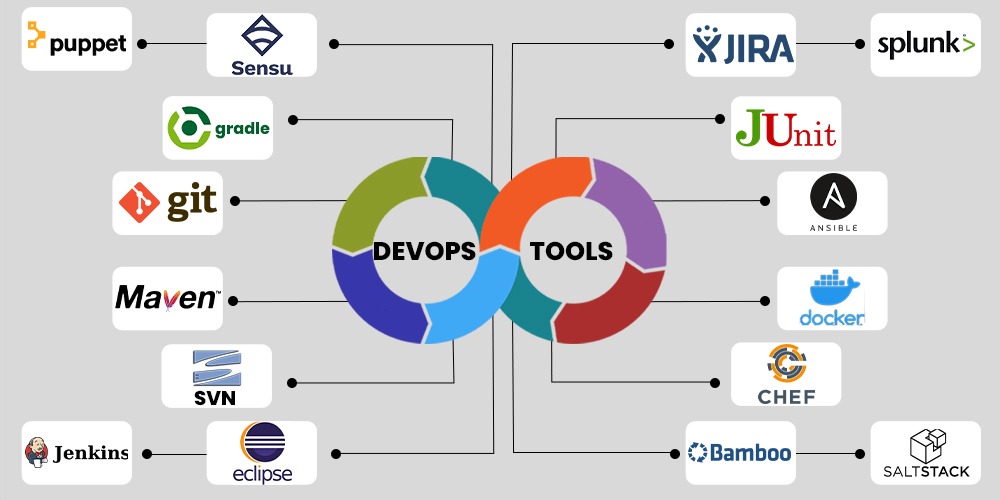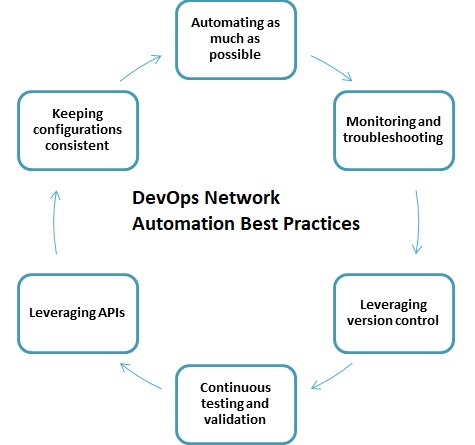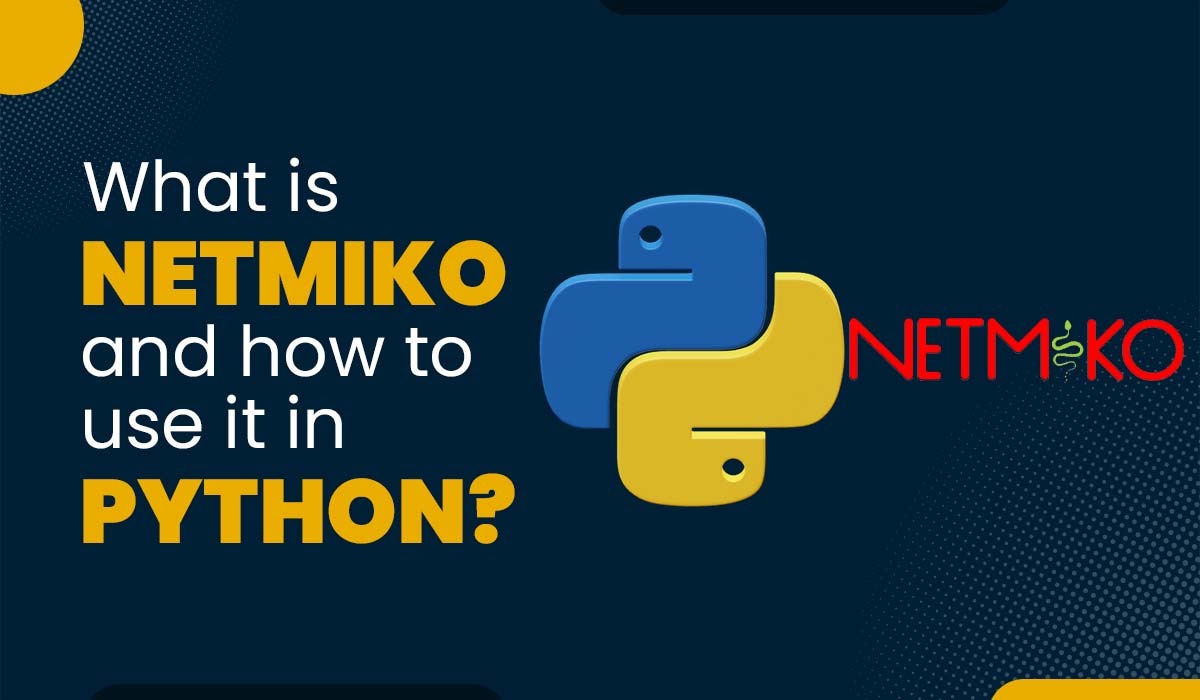Network Automation Using DevOps

Network automation has become an increasingly important aspect of modern IT operations. As organizations strive to reduce costs, improve efficiency, and increase agility, network automation using DevOps methodologies and tools has emerged as a powerful solution. To comprehend network automation with Devops, a network engineer must go through DevOps for Network Engineer training. In this blog post, we will explore the various ways in which DevOps can be used to automate networks, as well as best practices for implementing these techniques. Check out eligibility for DevOps. DevOps is a software development methodology emphasizing collaboration and communication between development and operations teams. This approach can be applied to network automation by using automation tools and scripts to manage and configure network devices, such as routers and switches. This allows for faster and more efficient deployment of network changes, as well as improved monitoring and troubleshooting capabilities. Network automation using DevOps involves utilizing the principles and practices of DevOps to automate various network management tasks. By applying DevOps methodologies to network management, organizations can improve their network operations’ efficiency, speed, and reliability. One of the key ways in which DevOps can be used for network automation is through the use of automation tools and scripts. These tools and scripts can be used to manage and configure network devices, such as routers and switches, as well as automate tasks, such as device provisioning, configuration management, and monitoring. For example, Ansible can be used to automate the deployment of network configurations, while Puppet can be used to manage and update network device configurations. Another key aspect of network automation using DevOps is the use of continuous integration and continuous delivery (CI/CD) practices. These practices involve continuously integrating code changes into a codebase and then continuously delivering these changes to the production environment. This approach allows for faster and more efficient deployment of network changes, as well as improved monitoring and troubleshooting capabilities. Network automation using DevOps also involves leveraging the use of version control systems to track and manage network configurations. This allows for easy rollbacks in case of any issues and helps maintain the consistency of network configurations. Moreover, DevOps practices also emphasize monitoring and troubleshooting, which can help to quickly identify and resolve network issues, reducing downtime. This can be achieved through automating network monitoring and troubleshooting, as well as leveraging APIs to automate tasks such as provisioning and configuration. In summary, network automation using DevOps involves: There are a variety of DevOps tools that can be used for network automation, such as Ansible, Puppet, and SaltStack. These tools allow for the automation of tasks such as device provisioning, configuration management, and monitoring. One of the most popular DevOps tools for network automation is Ansible. Ansible is an open-source automation tool that can be used to automate the configuration of network devices. It uses an agentless architecture, which means that it does not require any software to be installed on the devices themselves. Instead, it communicates with devices over SSH or WINRM, making it easy to automate a wide range of network devices. Another popular tool for network automation is Terraform. Terraform is an infrastructure as a code tool that can be used to automate the provisioning of network devices. It uses a simple, human-readable language to define the desired state of your network, and it can then automatically provision and configure network devices to match that state. In addition to these tools, there are many other DevOps tools that can be used for network automation, such as Puppet, Chef, SaltStack, etc. The key is to find the tool that best fits your organization’s needs and workflows. You may also like – DevNet vs DevOps When implementing network automation using DevOps, it is important to follow best practices to ensure that the process is as efficient and effective as possible. Some key best practices include: Integrating network automation with DevOps practices and tools can provide many benefits, such as: You can also check out this video to get more insights on DevOps for Network Engineers. Networking in DevOps is used for infrastructure provisioning, automated CI/CD pipelines, enabling communication between microservices, service discovery and load balancing, monitoring and logging, and ensuring security and compliance. Yes, DevOps is heavily focused on automation. Automation is a core principle and practice within DevOps methodologies. It involves automating various aspects of the software delivery pipeline, including building, testing, deployment, and infrastructure management. There are several networking tools commonly used in DevOps practices. Here are a few examples: Ansible, Terraform, Docker, Kubernetes, Jenkins, Wireshark, etc. Network automation can be achieved through scripting languages like Python, Perl, or PowerShell, allowing repetitive tasks to be automated. Configuration management tools like Ansible, Puppet, or Chef provide a declarative approach to automate network configurations. APIs, SDKs, network orchestration frameworks, intent-based networking, and software-defined networking are other methods used for network automation, each offering different levels of flexibility and control. In conclusion, network automation using DevOps methodologies and tools can provide many benefits, such as the faster deployment of network changes, improved monitoring and troubleshooting, increased agility, and cost savings. By following best practices and integrating network automation with DevOps, organizations can achieve greater efficiency and effectiveness in managing their networks. As organizations continue to adopt DevOps practices, it is important to focus on network automation as a key aspect of successful IT operations. Suggestions –Introduction
Network Automation using DevOps:

Network Automation using DevOps Tools

DevOps Network Automation Best Practices


Network Automation and DevOps Integration
Frequently Asked Questions
Q1 – How is networking used in DevOps?
Q2 – Is DevOps used for automation?
Q3 – What are the networking tools in DevOps?
Q4 – What are the methods of network automation?
Conclusion







